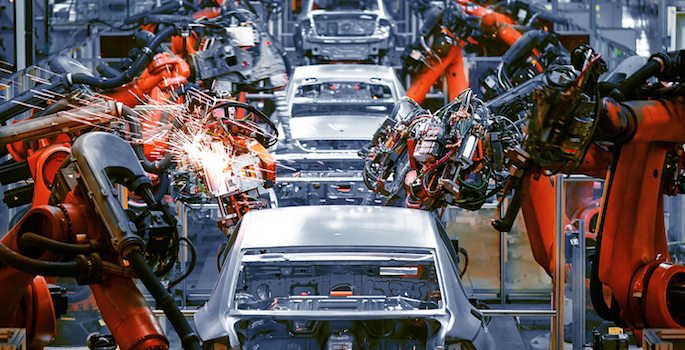The automobile industry in the United States has long been a cornerstone of the nation’s economy, driving innovation, creating jobs, and shaping the cultural landscape. From the assembly lines of Ford in the early 20th century to the rise of electric vehicles (EVs) in the 21st century, the industry has continually evolved to meet the demands of consumers, advances in technology, and shifting regulatory landscapes. This article explores the current state of the automobile industry in the USA, its major players, emerging trends, challenges, and the future outlook as the industry faces a period of profound transformation.
The History of the Automobile Industry in the USA
The American automobile industry is often traced back to the early 1900s when pioneers like Henry Ford revolutionized manufacturing with the introduction of the moving assembly line. Ford’s Model T, released in 1908, made cars affordable to the masses and changed the way automobiles were built and sold. The development of the American automotive industry was not just about manufacturing but also about creating a culture centered around personal mobility and convenience.
Throughout the 20th century, the “Big Three” automakers—General Motors (GM), Ford, and Chrysler—dominated the industry in the United States. These companies led innovations in vehicle design, safety features, and manufacturing techniques, while also contributing to the development of a robust supply chain and a vast dealership network across the country. The automotive industry became a symbol of American industrial strength, and its influence extended far beyond just the economy, playing a significant role in shaping the nation’s infrastructure and culture.
Major Players in the US Automobile Industry Today
The current automotive landscape in the USA is a highly competitive environment, with both traditional automakers and new entrants vying for market share. The “Big Three” still hold significant influence, but they now face competition from foreign automakers such as Toyota, Honda, and Volkswagen, which have increasingly established a strong presence in the US market.
General Motors (GM): GM remains one of the largest and most influential automakers in the USA. The company’s brands include Chevrolet, GMC, Cadillac, and Buick. In recent years, GM has been heavily investing in electric vehicles (EVs) and autonomous driving technology, signaling its shift towards a more sustainable and tech-driven future.
Ford: Ford has made significant strides in the EV market with models like the all-electric Mustang Mach-E and the electric F-150 Lightning. The company is focusing on both traditional combustion-engine vehicles and next-generation technologies to stay competitive in an evolving industry.
Stellantis (Chrysler): Formed by the merger of Fiat Chrysler and PSA Group, Stellantis brings together brands such as Chrysler, Jeep, Dodge, and Ram. Stellantis is positioning itself to pivot toward electrification and sustainable mobility, with plans to release a wide range of electric and hybrid models in the coming years.
Foreign Automakers: Japanese automakers like Toyota, Honda, and Nissan have been long-established players in the US market, offering a variety of sedans, SUVs, and trucks that cater to American consumers. These companies are also investing heavily in electric vehicles and autonomous technology to stay competitive.
Tesla: Tesla, the electric vehicle maker founded by Elon Musk, has disrupted the automobile industry with its electric cars, software-driven innovation, and bold vision for the future. Tesla has become one of the world’s most valuable car manufacturers and continues to lead the EV charge in the USA.
The Rise of Electric Vehicles (EVs)
One of the most significant trends in the US automobile industry is the growing popularity of electric vehicles. The push for sustainability, government incentives, and advancements in battery technology have made EVs more accessible to the average consumer. In addition, growing concerns about climate change and air pollution have spurred both automakers and consumers to embrace electric cars as a cleaner alternative to traditional gasoline-powered vehicles.
In response to this shift, the traditional automakers have made major investments in EV technology. GM, Ford, and Stellantis all have aggressive plans to roll out new electric models over the next decade. For instance, GM has announced that it plans to become carbon-neutral by 2040 and will launch 30 new electric vehicles globally by 2025. Similarly, Ford’s commitment to EVs includes the electric F-150 Lightning and the electric Mustang Mach-E.
Tesla, meanwhile, continues to lead the electric vehicle revolution with its range of models, including the Model 3, Model S, Model X, and Model Y. Tesla’s success has not only highlighted the potential for electric vehicles but has also forced other automakers to accelerate their own EV plans in order to remain competitive.
Autonomous Vehicles and the Future of Mobility
Another major trend shaping the future of the US automobile industry is the development of autonomous vehicles (AVs). Autonomous driving technology promises to revolutionize the way we commute, reducing traffic accidents, improving efficiency, and altering how cities and transportation systems are designed.
Several companies are investing in autonomous vehicle technology, including traditional automakers, tech companies, and startups. Ford has partnered with Argo AI to develop its own autonomous driving systems, while GM has made significant investments in Cruise, its autonomous vehicle subsidiary. Tesla, known for its Autopilot feature, continues to push the envelope in the development of full self-driving cars. However, despite the advancements in AV technology, regulatory hurdles, safety concerns, and technological limitations have slowed the widespread adoption of fully autonomous vehicles.
In addition to self-driving cars, there is a growing interest in Mobility-as-a-Service (MaaS), which includes ride-sharing and car-sharing services, as well as electric scooters and bikes. Companies like Uber, Lyft, and Waymo are exploring how autonomous vehicles can be integrated into these services to create a more flexible and sustainable transportation model.
Challenges Facing the Automobile Industry in the USA
While the US automobile industry is experiencing significant growth and innovation, it also faces a number of challenges. One of the most pressing issues is the global semiconductor shortage, which has severely impacted vehicle production. The shortage of microchips, which are used in everything from infotainment systems to engine control units, has led to production delays and supply chain disruptions for automakers.
Additionally, rising raw material costs, including steel, aluminum, and lithium for batteries, have increased the cost of manufacturing vehicles. These price hikes are being passed on to consumers, resulting in higher vehicle prices at a time when many Americans are already struggling with inflation and rising interest rates.
Regulatory pressures are also a significant challenge. As governments worldwide continue to implement stricter emissions standards, automakers must adapt their production lines to meet new environmental regulations. In the US, the Biden administration has set ambitious goals to reduce greenhouse gas emissions and increase the adoption of electric vehicles, pushing automakers to accelerate their transition to cleaner technologies.
The Future of the US Automobile Industry
The future of the automobile industry in the United States is both exciting and uncertain. As the shift towards electric vehicles accelerates, traditional automakers are investing heavily in EV production, while new entrants like Tesla continue to disrupt the market. Autonomous vehicles hold the promise of transforming urban mobility, but the widespread adoption of self-driving cars remains years away.
At the same time, challenges such as the global chip shortage, regulatory pressures, and rising production costs will continue to shape the industry. However, the ongoing trend toward innovation, sustainability, and improved connectivity is likely to define the future of automobiles in the USA.
As consumer preferences shift, the US automobile industry will need to embrace new technologies, business models, and sustainability practices to stay relevant in a rapidly changing landscape. With advancements in electric vehicles, autonomous driving, and mobility services, the next decade promises to be a transformative period for the automobile industry in the United States.



